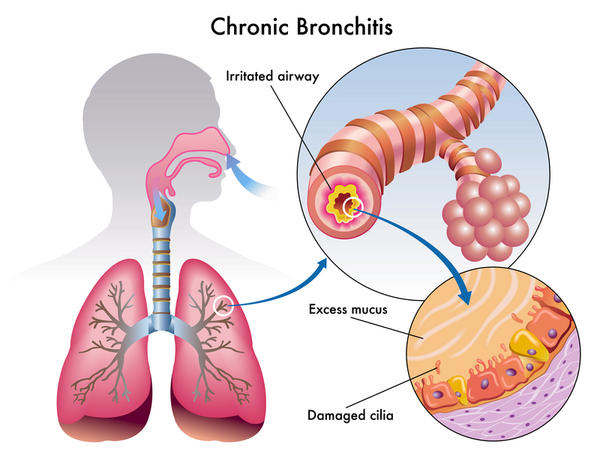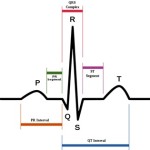Bronchitis is an inflammation of the mucous membranes of the larger sized airways in the lungs, called bronchi. The infection can be acute or chronic, and it is characterized with production of large amounts of mucus (yellow to green color) and strong cough that can cause chest pain.
Acute Bronchitis
Acute bronchitis occurs most commonly during or after an upper respiratory infection such as common cold or influenza, and it is caused usually from viruses and more rarely from bacteria. It is an inflammation of the lower respiratory system that lasts up to three weeks. The symptoms include coughing, wheezing, chest pain, mild body temperature that lasts for few days (if it lasts longer, or if it’s accompanied with fever, it may suggest pneumonia), fatigue and production of thick mucus. The most common symptom is coughing, which is developed as an attempt of the organism to expel the excess of mucus in the lungs. The result is sore throat, difficulty in breathing, runny nose, and production of sputum.
Acute bronchitis is most commonly caused by rhinoviruses, adenoviruses, parainfluenza virus, influenza virus, and RSV (respiratory syncytial virus). The acute bronchitis bacteria are commonly caused by mycoplasma pneumonia, chlamidophila pneumonia or etc.
Due to non-specific symptoms and sings for this disease, patients must run different tests to help diagnose bronchitis. X-rays can be done to exclude pneumonia, sputum culture to exclude some bacterial respiratory infections, and pulmonary function tests to exclude asthma. The physical examination in the doctor’s office includes listening to the lungs with a stethoscope, and measuring the body temperature.
Treatment of bronchitis is systematic, and it is focused on treating the different symptoms that occur during the illness. Bronchitis doesn’t require any specific treatment, and it can be resolved and cured without medications, because it is a viral inflammation. Antibiotics can be used only if the cause for the bronchitis is a bacterial infection. Sometimes, patients with high risk are advised to take some medications to prevent any complications or development of secondary bacterial infections. The non medication treatments, like drinking a lot of fluids, and inhaling therapy with herbs are also advised.
Chronic Bronchitis
Chronic Bronchitis is a type of obstructive pulmonary disease, defined with progressive cough and lasts longer than three months in the absence of any underlying disease. Symptoms include difficulty in breathing and progressive coughing. A production of thick mucus in yellow to brown color can occur, sometimes accompanied with blood specs. The mucus blocks the airways making the breathing difficult, and the increased mucus in the lungs makes them good environment for development of other bacteria and viruses for other infections like pneumonia.
Most commonly, chronic bronchitis is caused by smoking cigarettes or tobacco, air pollution, inhaling irritating poisonous gasses or materials, and some other risk factors that can damage the respiratory system. Bacterial chronic bronchitis most commonly is caused by streptococcus pneumoniae.
The damage that causes decline in lung function can be slowed down with smoking cessation and treatment of the symptoms separately. The approach for this condition should be typical and non-pharmacologic.
Diagnosing chronic bronchitis is done with physical examination at the doctor’s office, made pulmonary function test, chest x-rays, sputum culture, and tests to exclude conditions such as asthma and emphysema.
Treatment for chronic bronchitis includes inhaling broncho-dilatators that can open the air passages and improve the quality of breathing, use of medications that can help with the coughing, and use of other medications that can help reduce the inflammation. The non-medical approach includes drinking lot of fluids, resting and inhaling herbal therapy, or sometimes even oxygen therapy if needed. There are also exercise programs to improve the health of the patients with respiratory diseases.
Quit smoking to improve your health, and prevent bronchitis. Other type of prevention is taking a vaccine against influenza and pneumonia; this is recommended especially to the groups with higher risk of catching respiratory diseases.























